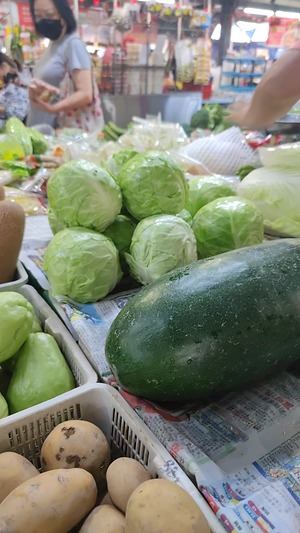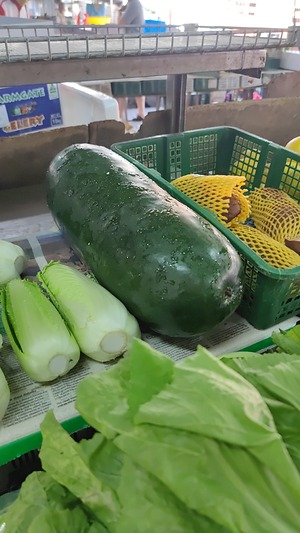


Kundu Winter Melons
Estimated Inventory, lb : 0
Description/Taste
Kundu winter melons are long and cylindrical, averaging 30-60 centimeters in length. The skin is waxy, smooth, and dark green with a powdery ash-colored coating when mature. The flesh is white and succulent with a large seed cavity. Kundu winter melons are mild and have little taste, similar to the neutral flavor of a cucumber.
Seasons/Availability
Kundu winter melons are available year-round.
Current Facts
The Kundu winter melon, botanically classified as Benincasa hispida, is a large fruit that is extremely popular in Asia and belongs to the Cucurbitaceae family, which includes cucumbers and squash. Also known as Ash gourd and winter gourd, Kundu winter melons can grow to be so large that they are often sold in slices rather than as a whole in markets.
Nutritional Value
Kundu winter melon is an excellent source of vitamin C, iron, potassium, calcium, magnesium, and zinc.
Applications
Kundu winter melons are best suited for cooked applications such as steaming, braising, stir-frying or boiling. They are most popularly steamed, sliced, and used in soups and stir-fries. They can also be stuffed with shrimp, pork, or mushrooms and steamed, or sliced and candied as a bite-sized appetizer. Kundu winter melons can be used salads and in smoothies and juices as a cooling agent on hot days. Kundu winter melons pair well with honey, black pepper, garlic, ginger, scallions, cilantro, chicken broth, mushrooms, ham, eggs, and pork. Kundu winter melons will keep up for several months when whole and uncut in a cool, dry place.
Ethnic/Cultural Info
Winter melon is extremely popular and well-known in China, but it is also highly valued in India as an energizing life source. Sadhguru, the famous Indian yogi, considers the winter melon to have natural “prana,” or vital life energy and when ingested it passes on good vibrations to the body. In India, there is also the tradition of hanging a winter melon in front of a new home to use the good vibrations to get rid of trapped negative energy inside the space.
Geography/History
The origin of winter melon is relatively unknown, but research suggests it was originally discovered in Indonesia, China, or Indo-Malaysia and dates back to the 5th and 6th century BCE. Today, Kundu winter melons can be found in local markets and specialty grocers in Southeast Asia, China, and India. The Kundu wither melon pictured above was purchased and photographed in Kuching, Borneo.
Recipe Ideas
Recipes that include Kundu Winter Melons. One










